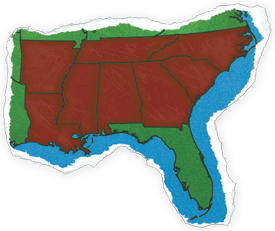Brain Trust
 |
In the eight states stretching from North Carolina to Mississippi, stroke rates are more than 40 percent above the national average—and even higher among African Americans. But epidemiologist George Howard, Ph.D., of UAB’s School of Public Health leads a study that has disproven accepted assumptions about this “Stroke Belt.”
As principal investigator for the largest population-based investigation of its kind, the Reasons for Geographic and Racial Differences in Stroke (REGARDS) study, Howard oversees an initiative involving nearly $50 million in funding that has enrolled more than 30,200 study participants.
Howard’s data confirms that Southerners are more likely to be hypertensive, diabetic, and obese than Americans elsewhere; that African Americans are more hypertensive and diabetic than both whites and their peers in other regions; and that African-American women in particular are more obese. But while those factors play a significant role, it is much less important than once thought, Howard notes.
One REGARDS project found that geographic and racial differences account for less than 25 percent of the overall risk factor for stroke death. That means nontraditional risk factors—such as poverty, access to care, environmental exposures, and infection—also deserve research attention.
Read more breakthrough stories in UAB Magazine.